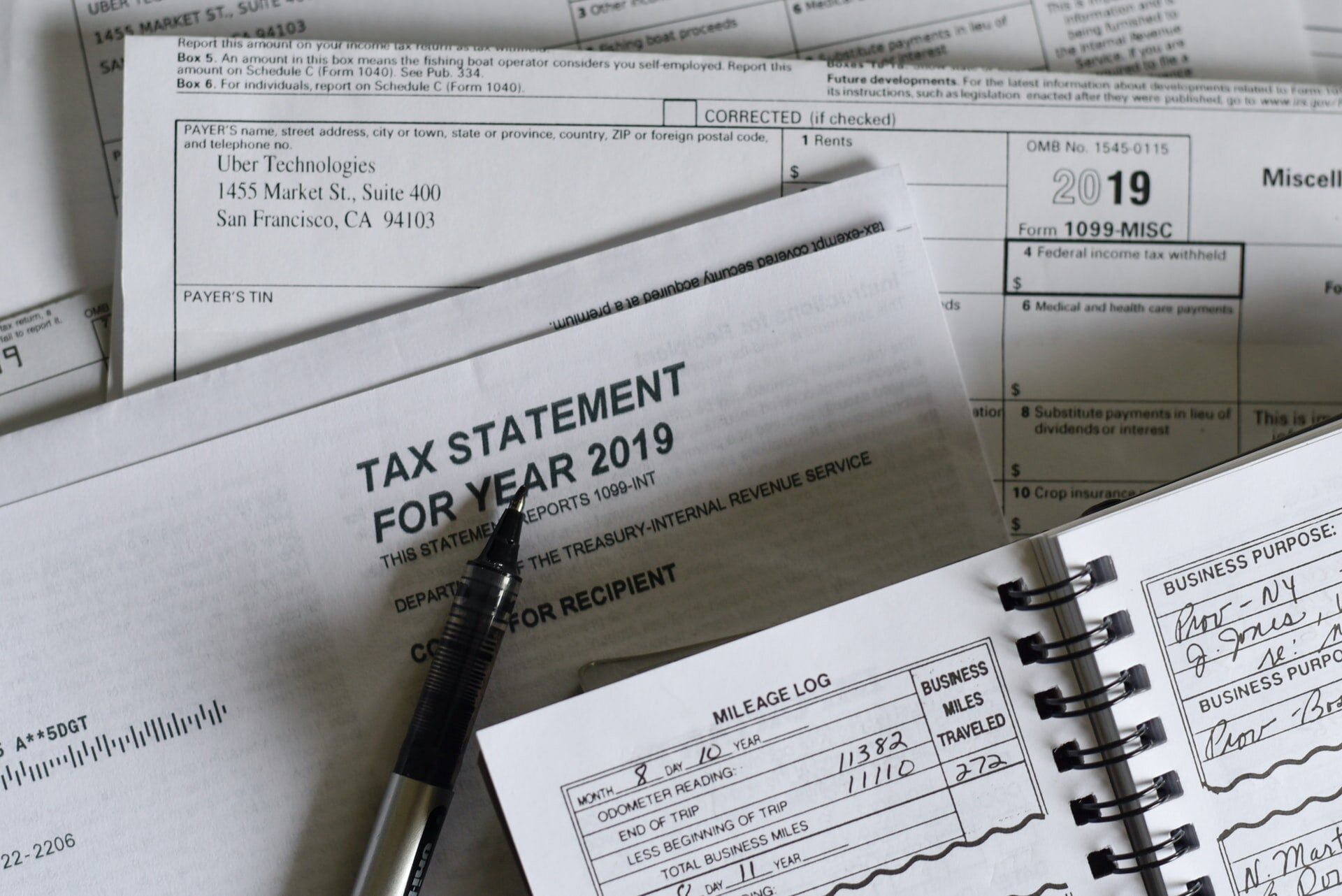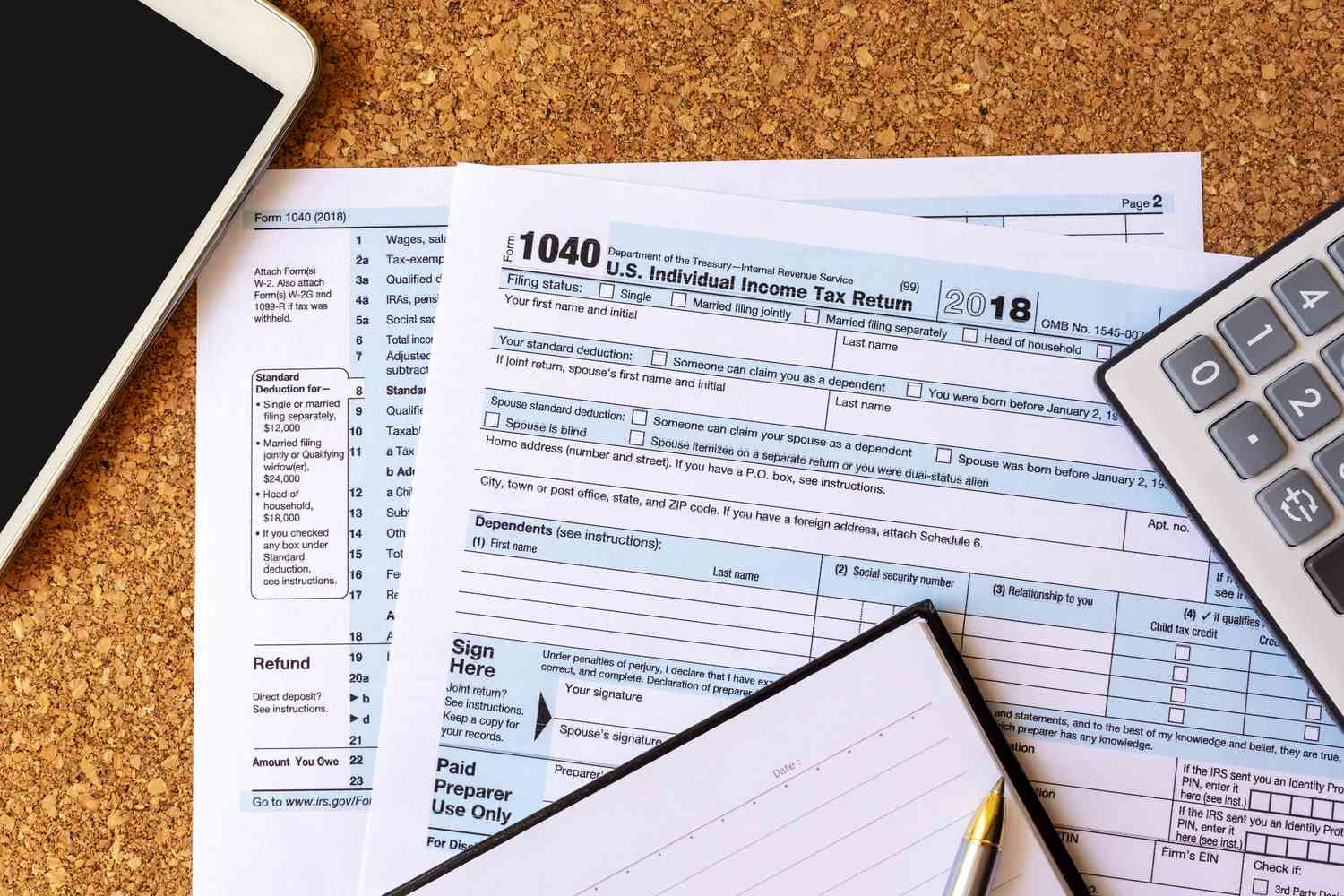

Finance
How To Respond To An IRS Notice
Published: October 31, 2023
Learn how to effectively respond to an IRS notice and navigate the complex world of finance with our expert tips and guidance.
(Many of the links in this article redirect to a specific reviewed product. Your purchase of these products through affiliate links helps to generate commission for LiveWell, at no extra cost. Learn more)
Table of Contents
Introduction
Receiving a notice from the Internal Revenue Service (IRS) can be a source of anxiety for many individuals and businesses. However, it’s important to approach these notices with a calm and proactive mindset. Understanding how to respond to an IRS notice is crucial in resolving any tax issues and ensuring a favorable outcome.
In this article, we will guide you through the process of responding to an IRS notice, providing you with practical steps to navigate the situation effectively. By following these guidelines, you can address the notice promptly and minimize any potential negative consequences.
It is important to note that an IRS notice does not automatically imply that you have done something wrong. Sometimes, these notices could be for routine requests for additional information, clarification, or verification. Regardless of the reason, it is crucial to handle the situation promptly and with care.
By remaining calm and proactive, you can effectively address the concerns raised by the IRS and find a resolution that aligns with the tax laws and regulations. So, let’s dive into the steps you can take to respond to an IRS notice in the most efficient and effective manner.
Understanding IRS Notices
When you receive an IRS notice, it’s important to understand the purpose and content of the communication. IRS notices can vary in complexity and specific information provided, but they generally serve to inform you about a specific issue or request related to your taxes.
IRS notices can cover a wide range of topics, including but not limited to:
- Requests for additional documentation or information
- Notice of changes to your tax return
- Notices of underreported income or overclaimed deductions
- Proposed tax adjustments or assessments
- Audit notifications or requests for an audit
- Notice of unpaid taxes or penalties
It is crucial to carefully read the notice to ensure you fully understand what the IRS is requesting or notifying you about. Pay close attention to the language used, deadlines, and any specific instructions provided. Understanding the purpose of the notice will help you respond effectively and address the concerns raised by the IRS.
If you find the notice confusing or have difficulty understanding the content, it may be helpful to seek professional advice. Tax professionals, such as accountants or tax attorneys, can assist you in deciphering the notice and providing guidance on the appropriate response.
Remember, not all IRS notices indicate that you have made an error or are facing penalties. Some notices may be routine requests for additional information or clarification. However, it is crucial to address any notice from the IRS promptly and provide the required response, regardless of the nature of the notice.
Now that we have a better understanding of IRS notices, let’s move on to the next step in responding to them – gathering all relevant documents.
Gather All Relevant Documents
Once you have read the IRS notice and understand the nature of the request, the next step is to gather all the relevant documents and information related to the notice. This is an important step in ensuring that you provide a complete and accurate response to the IRS.
Start by carefully reviewing the notice and noting any specific documents or information that the IRS is requesting. This could include items such as:
- Tax returns for the relevant years
- Bank statements
- Receipts and invoices
- W-2s or 1099 forms
- Documentation of deductions or credits claimed
Organize these documents in a systematic manner, making it easier for you to locate them when preparing your response. Keep copies of all the documents you gather, as it is important to have a record of what you provide to the IRS.
In addition to the specific items requested in the notice, it may be beneficial to include any additional relevant information that supports your case or clarifies any potential discrepancies. This can help provide a more comprehensive and convincing response to the IRS.
If you are unable to locate certain documents or need additional time to gather them, consider reaching out to the IRS or seeking professional advice. It’s crucial to communicate any challenges or delays to the IRS proactive and transparently.
By gathering all the relevant documents and information, you will be well-prepared to address the concerns raised in the IRS notice and provide a thorough and credible response.
Now that we have gathered all the necessary documents, let’s move on to the next step – reading the notice carefully.
Read the Notice Carefully
After gathering all the relevant documents, it is essential to read the notice from the IRS carefully. Take your time to understand the purpose and details outlined in the notice. Reading the notice thoroughly will help you determine the specific issue or request from the IRS.
Here are a few key things to pay attention to while reading the notice:
- The reason for the notice: Identify the specific issue or request mentioned in the notice. Understanding the reason will help you craft an appropriate response.
- Deadlines: Take note of any deadlines mentioned in the notice. IRS notices often have specific response timelines, and it’s crucial to adhere to them to avoid further complications.
- Instructions: Follow any instructions provided in the notice regarding the required response, documentation, or any additional actions you need to take.
- Contact Information: If you have any questions or require clarification, make note of the contact information provided in the notice. You may need to reach out to the IRS for further assistance.
- Penalties or Consequences: Be aware of any penalties or consequences mentioned in the notice. Understanding the potential impact can help you prioritize your response and take necessary actions.
It is important not to overlook any details mentioned in the IRS notice. Missing important information or misinterpreting requests can lead to delays or misunderstandings in your response.
If you find aspects of the notice confusing or need further clarification, consider seeking professional advice. Tax professionals can help you interpret the notice and provide guidance on the appropriate course of action.
Once you have read and understood the notice, it’s time to move on to the next step – identifying the reason for the notice.
Identify the Reason for the Notice
After reading the IRS notice carefully, the next step is to identify the specific reason for the notice. Understanding the purpose behind the notice will help you craft an appropriate response and address the concerns raised by the IRS.
The IRS notice typically provides information about the issue or request they have identified. It could be related to various tax matters, such as:
- Discrepancies in reported income
- Errors or omissions on your tax return
- Claimed deductions or credits that need further verification
- Failure to pay taxes or late payments
- Potential audit or examination
By determining the specific reason for the notice, you can focus your response on providing the necessary information or taking corrective actions.
If you find it challenging to understand the reason stated in the notice, it may be beneficial to seek professional assistance. Tax professionals have the expertise to interpret IRS notices accurately and can guide you on the appropriate course of action.
Responding to the notice without a clear understanding of the underlying issue can potentially lead to incorrect or incomplete responses, causing further complications with the IRS.
Take the time to review your tax records, returns, and any other relevant information to identify any potential errors or discrepancies that may have triggered the notice. Be thorough and meticulous in your examination to ensure your response adequately addresses the IRS’s concerns.
Once you have a clear understanding of the reason behind the notice, you can proceed to the next step – following the instructions provided.
Follow the Instructions
After identifying the reason for the IRS notice, it is crucial to carefully follow the instructions provided in the notice. The instructions will guide you on the specific actions you need to take to respond to the notice adequately.
Here are some common instructions that may be included in an IRS notice:
- Provide additional documentation: The IRS may request specific documents to support your tax return or clarify any discrepancies. Ensure you gather and submit all the required documents within the specified timeline.
- Respond by a certain deadline: IRS notices often have response deadlines. It is essential to note the deadline mentioned in the notice and ensure you submit your response before the due date. Meeting the deadline demonstrates your cooperation and can help avoid further penalties or consequences.
- Make a payment: If the notice indicates a tax shortfall or overdue payment, it is essential to submit the required payment promptly. The IRS can provide instructions on how to make the payment, such as using electronic payment systems or sending a check.
- Request an extension: In some cases, you may need additional time to gather the necessary information or seek professional advice. If the notice does not provide sufficient time, you can request an extension from the IRS to submit your response.
- Appeal or dispute the notice: If you disagree with the IRS’s findings or believe there is an error, the notice may provide information on how to file an appeal or dispute the matter. Follow the instructions precisely to initiate the appeals process.
It is crucial to read the instructions thoroughly and understand what is expected of you. Ensure that you comply with all the requirements outlined in the notice, as failing to do so can result in further complications with the IRS.
If you have any questions or uncertainties regarding the instructions, consider seeking professional guidance. Tax professionals can help clarify any confusing aspects of the notice and provide guidance on the appropriate steps to take.
By following the instructions provided in the IRS notice, you demonstrate your willingness to cooperate and resolve the tax issue at hand. This will help facilitate a smoother process in addressing the concerns raised by the IRS.
Now that you understand the necessary instructions, let’s move on to the next step – preparing your response.
Prepare Your Response
Once you have gathered all the relevant documents, read the notice carefully, identified the reason for the notice, and understood the instructions, it’s time to prepare your response to the IRS.
Here are some essential steps to consider when preparing your response:
- Organize your documents: Ensure that all the requested documents and any additional supporting information are well-organized and easily accessible. This will make it easier for you to submit the required information promptly.
- Craft a clear and concise response: Be clear and concise in your response to the IRS. Provide the requested information or explanation in a straightforward manner. Address each point raised in the notice thoroughly and provide any necessary context or documentation.
- Keep copies of all correspondence: Make copies of your response letter and any supporting documents that you submit to the IRS. This will serve as a record of your communication and can be helpful in case of any future inquiries or disputes.
- Seek professional advice, if needed: If you are uncertain about how to address certain aspects of the notice or feel overwhelmed by the complexity of the situation, it may be helpful to consult a tax professional. They can guide you in crafting an appropriate and effective response.
- Double-check for accuracy: Before submitting your response, carefully review all the information provided, ensuring accuracy and completeness. Check for any errors or omissions that could potentially affect the outcome.
It is important to remain professional and objective when writing your response. Stick to the facts, provide relevant information and supporting documentation, and avoid any emotional or confrontational language.
Remember, your goal is to address the concerns raised by the IRS and provide a comprehensive and satisfactory explanation or resolution.
By thoroughly preparing your response, you increase your chances of a successful resolution and minimize any potential negative consequences.
Now that you have prepared your response, let’s move on to the next step – seeking professional help if needed.
Seek Professional Help if Needed
Dealing with an IRS notice can be overwhelming and complex, especially if you are unsure about how to proceed or lack the expertise in tax matters. In such cases, seeking professional assistance can be highly advantageous.
Here are some situations where it may be beneficial to seek professional help:
- Complex tax issues: If the notice involves intricate tax matters, such as tax audits, complex deductions, or international tax obligations, consulting a tax professional can provide you with expert guidance and ensure compliance with the relevant laws and regulations.
- Limited knowledge or understanding: If you are unfamiliar with tax laws or find it challenging to interpret the notice and respond appropriately, working with a tax professional can help you navigate the process more efficiently. They can explain the intricacies of the notice and provide the necessary guidance.
- Strategic advice for negotiations or appeals: If you disagree with the findings in the notice or wish to appeal a decision, a tax professional can help you develop a strong defense strategy. They can analyze your situation, gather supporting evidence, and present your case to the IRS effectively.
- Time constraints: If you have a limited amount of time to respond to the notice or gather the required information, a tax professional can expedite the process by utilizing their knowledge and resources efficiently.
- Peace of mind: Hiring a tax professional can provide you with peace of mind, knowing that an expert is handling your tax matters. They can handle the communication with the IRS, ensuring that your rights are protected, and working towards a favorable resolution.
When choosing a tax professional, consider their qualifications, experience, and reputation. Look for certified public accountants (CPAs), enrolled agents, or tax attorneys who specialize in the area relevant to your situation.
While seeking professional help may come at a cost, it can save you time, stress, and potential mistakes in the long run.
Remember, even with professional assistance, it is still essential to stay involved in the process and closely review the advice and responses provided by the tax professional.
Now that we have discussed seeking professional help, let’s move on to the next step – submitting your response to the IRS.
Submitting Your Response
Once you have prepared your response and, if necessary, sought professional help, it’s time to submit your response to the IRS. Timely and accurate submission of your response is crucial to address the concerns raised in the notice effectively.
Here are some important steps to consider when submitting your response:
- Follow the submission instructions: Review the notice carefully to determine how the IRS wants you to submit your response. It could be through mail, fax, or electronically. Adhere to the specified method to ensure your response reaches the appropriate department.
- Include all required documents and information: Double-check that you have included all the requested documents and any additional supporting information as instructed in the notice. Ensure that each document is labeled and organized properly for easy reference.
- Keep copies of your response: Make copies of your response, including all attachments and supporting documentation, before sending them to the IRS. This will serve as a record of your submission and may come in handy in case of any discrepancies or future inquiries.
- Consider sending your response via certified mail: To ensure that your response is received and to have proof of mailing, consider sending it via certified mail with a return receipt requested. This provides you with a tracking number and confirmation of delivery.
- Save any communication or receipt confirmations: If you correspond with the IRS through email, online portals, or any other means, be sure to save and organize all communication. This will help you reference previous discussions and track the progress of your response.
It is important to submit your response within the specified timeframe mentioned in the notice. Failing to meet the deadline can lead to further penalties or complications with the IRS. Prioritize the timely submission of your response to maintain a proactive approach.
After submitting your response, it is recommended to monitor your mail and email for any further communication from the IRS. They may respond with additional requests for information or provide an update on the progress of your case. Stay attentive and promptly respond to any further inquiries.
Now that you have submitted your response, keep a copy of all communication and track the progress of your case. Let’s move on to the final section – keeping a copy and tracking your response.
Keep a Copy and Track Your Response
After submitting your response to the IRS, it is crucial to keep a copy of all the documents and correspondence related to your case. This will serve as a record of your communication and help you track the progress of your response.
Here are some important steps to ensure you keep a copy and track your response effectively:
- Make copies of all documents: Keep a copy of your response letter, any attachments, and all supporting documentation. This includes any receipts or confirmation of delivery if you sent your response via certified mail or other tracked methods.
- Organize your copies: Store your copies in a safe and easily accessible place. You can use physical folders or create digital folders on your computer to keep all the relevant files in one location.
- Record important dates and details: Make note of the date you submitted your response and any other important dates related to your case. This includes deadlines, follow-up discussions with the IRS, or any additional requests for information.
- Track your mail and email: Regularly check your mail for any further correspondence from the IRS. Additionally, monitor your email inbox, including spam or junk folders, for any electronic communications. Respond promptly to any inquiries or requests for additional information.
- Document phone conversations: If you have phone conversations with the IRS or any representative, make note of the date, time, and details discussed during the conversation. Keep a record of any reference numbers or names of the individuals you spoke with.
Keeping a copy and tracking your response ensures you have a complete record of all interactions with the IRS. This can be valuable in case of any discrepancies or if you need to refer back to specific details during the resolution process.
Remember, maintaining accurate records and staying organized will help you stay on top of your case and provide necessary information when required.
As you track your response, be prepared for potential follow-up interactions with the IRS. They may request additional information or provide updates on the progress of your case. Respond promptly and thoroughly to any further inquiries to ensure a smooth resolution.
Now that you understand the importance of keeping a copy and tracking your response, let’s conclude this article.
Conclusion
Responding to an IRS notice can be a stressful and daunting experience, but by following the proper steps, you can address the concerns raised and work towards a favorable resolution. Throughout this article, we have explored the essential steps to respond effectively to an IRS notice.
It is crucial to approach the situation calmly and proactively. Understanding the purpose of the notice, gathering all relevant documents, reading the notice carefully, and identifying the reason for the notice are key initial steps. Following the instructions provided and preparing a thorough and well-organized response are vital in addressing the IRS’s concerns.
Seeking professional help, if needed, can provide guidance and expertise in navigating complex tax matters. Submitting your response promptly, while keeping a copy and tracking the progress of your case, ensures that you maintain accurate records and stay engaged throughout the resolution process.
Remember, an IRS notice doesn’t automatically imply wrongdoing. It may be a routine request for information or clarification. By responding promptly and providing the necessary documentation, you demonstrate your cooperation and willingness to resolve any tax issues.
While handling an IRS notice can be challenging, it is important to stay proactive, seek assistance when needed, and maintain accurate records. By doing so, you increase your chances of a successful outcome and minimize any potential negative consequences.
Finally, if you have any uncertainties or concerns during the process of responding to an IRS notice, don’t hesitate to reach out to tax professionals or legal advisors who can provide expert guidance tailored to your specific situation.
By following the steps outlined in this article, you can effectively respond to an IRS notice, address the concerns raised, and work towards achieving a favorable resolution with the IRS.














